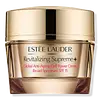What's inside
What's inside
 Key Ingredients
Key Ingredients

 Benefits
Benefits

 Concerns
Concerns

 Ingredients Side-by-side
Ingredients Side-by-side

Water
Skin ConditioningOctocrylene
UV AbsorberButyloctyl Salicylate
Skin ConditioningEthylhexyl Salicylate
UV AbsorberGlycerin
HumectantButyl Methoxydibenzoylmethane
UV AbsorberPolysorbate 60
EmulsifyingCetyl Alcohol
EmollientSorbitan Stearate
EmulsifyingDimethicone
EmollientTridecyl Stearate
EmollientButylene Glycol
HumectantPentylene Glycol
Skin ConditioningMoringa Oleifera Seed Extract
Skin ConditioningTuna Extract
Skin ConditioningHordeum Vulgare Extract
EmollientCucumis Sativus Fruit Extract
EmollientNarcissus Tazetta Bulb Extract
AstringentSigesbeckia Orientalis Extract
Skin ConditioningPyrus Malus Fruit Extract
Skin ConditioningLens Esculenta Fruit Extract
Skin ConditioningLactis Proteinum
Skin ConditioningCitrus Medica Vulgaris Fruit Extract
AntioxidantCaffeine
Skin ConditioningAlgae Extract
EmollientLaminaria Digitata Extract
Skin ProtectingTocopheryl Acetate
AntioxidantAcetyl Glucosamine
Skin ConditioningAstrocaryum Murumuru Seed Butter
EmollientSucrose
HumectantTridecyl Trimellitate
EmollientDipentaerythrityl Hexacaprylate/Hexacaprate
EmulsifyingPEG-100 Stearate
Trehalose
HumectantCetyl Palmitate
EmollientSorbitol
HumectantAcetyl Hexapeptide-8
HumectantSodium Lactate
BufferingAcrylates/C10-30 Alkyl Acrylate Crosspolymer
Emulsion StabilisingSodium Benzoate
MaskingSorbitan Palmitate
EmulsifyingSorbitan Olivate
EmulsifyingEthylhexylglycerin
Skin ConditioningSodium PCA
HumectantPvp
Emulsion StabilisingSodium Polyacrylate
AbsorbentPropylene Glycol Dicaprate
EmollientSodium Hyaluronate
HumectantIsoceteth-20
EmulsifyingHelianthus Annuus Seedcake
AbrasivePolyethylene
AbrasiveParfum
MaskingTetrahexyldecyl Ascorbate
AntioxidantSodium Hydroxide
BufferingDisodium EDTA
BHT
AntioxidantPhenoxyethanol
PreservativeChlorphenesin
AntimicrobialCI 19140
Cosmetic ColorantCI 14700
Cosmetic ColorantWater, Octocrylene, Butyloctyl Salicylate, Ethylhexyl Salicylate, Glycerin, Butyl Methoxydibenzoylmethane, Polysorbate 60, Cetyl Alcohol, Sorbitan Stearate, Dimethicone, Tridecyl Stearate, Butylene Glycol, Pentylene Glycol, Moringa Oleifera Seed Extract, Tuna Extract, Hordeum Vulgare Extract, Cucumis Sativus Fruit Extract, Narcissus Tazetta Bulb Extract, Sigesbeckia Orientalis Extract, Pyrus Malus Fruit Extract, Lens Esculenta Fruit Extract, Lactis Proteinum, Citrus Medica Vulgaris Fruit Extract, Caffeine, Algae Extract, Laminaria Digitata Extract, Tocopheryl Acetate, Acetyl Glucosamine, Astrocaryum Murumuru Seed Butter, Sucrose, Tridecyl Trimellitate, Dipentaerythrityl Hexacaprylate/Hexacaprate, PEG-100 Stearate, Trehalose, Cetyl Palmitate, Sorbitol, Acetyl Hexapeptide-8, Sodium Lactate, Acrylates/C10-30 Alkyl Acrylate Crosspolymer, Sodium Benzoate, Sorbitan Palmitate, Sorbitan Olivate, Ethylhexylglycerin, Sodium PCA, Pvp, Sodium Polyacrylate, Propylene Glycol Dicaprate, Sodium Hyaluronate, Isoceteth-20, Helianthus Annuus Seedcake, Polyethylene, Parfum, Tetrahexyldecyl Ascorbate, Sodium Hydroxide, Disodium EDTA, BHT, Phenoxyethanol, Chlorphenesin, CI 19140, CI 14700
Pyrus Malus Juice
Skin ConditioningAloe Barbadensis Leaf Juice
Skin ConditioningVitis Vinifera
MaskingPrunus Cerasus Juice
Skin ConditioningGlycerin
HumectantSimmondsia Chinensis Seed Oil
EmollientCaprylic/Capric Triglyceride
MaskingCetearyl Alcohol
EmollientCarthamus Tinctorius Seed Oil
MaskingPrunus Amygdalus Dulcis Oil
Skin ConditioningHydroxystearyl Alcohol
Glyceryl Stearate
EmollientHydroxystearyl Glucoside
Persea Gratissima Oil
Skin ConditioningHelianthus Annuus Seed Oil
EmollientCitrus Grandis
Artemisia Princeps Extract
Skin ConditioningTocopherol
AntioxidantPhenethyl Alcohol
MaskingXanthan Gum
EmulsifyingCetearyl Olivate
Caprylyl Glycol
EmollientCaprylhydroxamic Acid
Sorbitan Olivate
EmulsifyingEthylhexylglycerin
Skin ConditioningTrehalose
HumectantCitrus Tangerina Extract
TonicOctanediol
Ascorbic Acid
AntioxidantPalmitoyl Tripeptide-5
Skin ConditioningPalmitoyl Tripeptide-38
Skin ConditioningSodium Hyaluronate
HumectantArginine
MaskingHydroxypropyl Cyclodextrin
MaskingPyrus Malus Juice, Aloe Barbadensis Leaf Juice, Vitis Vinifera, Prunus Cerasus Juice, Glycerin, Simmondsia Chinensis Seed Oil, Caprylic/Capric Triglyceride, Cetearyl Alcohol, Carthamus Tinctorius Seed Oil, Prunus Amygdalus Dulcis Oil, Hydroxystearyl Alcohol, Glyceryl Stearate, Hydroxystearyl Glucoside, Persea Gratissima Oil, Helianthus Annuus Seed Oil, Citrus Grandis, Artemisia Princeps Extract, Tocopherol, Phenethyl Alcohol, Xanthan Gum, Cetearyl Olivate, Caprylyl Glycol, Caprylhydroxamic Acid, Sorbitan Olivate, Ethylhexylglycerin, Trehalose, Citrus Tangerina Extract, Octanediol, Ascorbic Acid, Palmitoyl Tripeptide-5, Palmitoyl Tripeptide-38, Sodium Hyaluronate, Arginine, Hydroxypropyl Cyclodextrin
Ingredients Explained
These ingredients are found in both products.
Ingredients higher up in an ingredient list are typically present in a larger amount.
Ethylhexylglycerin (we can't pronounce this either) is commonly used as a preservative and skin softener. It is derived from glyceryl.
You might see Ethylhexylglycerin often paired with other preservatives such as phenoxyethanol. Ethylhexylglycerin has been found to increase the effectiveness of these other preservatives.
Glycerin is already naturally found in your skin. It helps moisturize and protect your skin.
A study from 2016 found glycerin to be more effective as a humectant than AHAs and hyaluronic acid.
As a humectant, it helps the skin stay hydrated by pulling moisture to your skin. The low molecular weight of glycerin allows it to pull moisture into the deeper layers of your skin.
Hydrated skin improves your skin barrier; Your skin barrier helps protect against irritants and bacteria.
Glycerin has also been found to have antimicrobial and antiviral properties. Due to these properties, glycerin is often used in wound and burn treatments.
In cosmetics, glycerin is usually derived from plants such as soybean or palm. However, it can also be sourced from animals, such as tallow or animal fat.
This ingredient is organic, colorless, odorless, and non-toxic.
Glycerin is the name for this ingredient in American English. British English uses Glycerol/Glycerine.
Learn more about GlycerinSodium Hyaluronate is hyaluronic acid's salt form. It is commonly derived from the sodium salt of hyaluronic acid.
Like hyaluronic acid, it is great at holding water and acts as a humectant. This makes it a great skin hydrating ingredient.
Sodium Hyaluronate is naturally occurring in our bodies and is mostly found in eye fluid and joints.
These are some other common types of Hyaluronic Acid:
Learn more about Sodium HyaluronateSorbitan Olivate is created from the fatty acids in olive oil and sorbitol.
This ingredient is an oil in water emulsifier. It helps stabilize a product by preventing oils and waters from separating. Sorbitan Olivate also helps hydrate the skin.
Manufacturers sell sorbitan olivate under the name OliveM 1000. OliveM 1000 a multifunctional ingredient. It is self-emulsifying. According to a manufacturer, OliveM 1000 does not disrupt natural skin biome.
Due to its olive oil base, this ingredient may not be fungal-acne safe.
Learn more about Sorbitan OlivateTrehalose is a disaccharide made of two glucose molecules (glucose is sugar!). Trehalose is used to help moisturize skin. It also has antioxidant properties.
As a humectant, trehalose helps draw moisture from the air to your skin. This helps keep your skin hydrated.
Due to its antioxidant properties, trehalose may help with signs of aging. Antioxidants help fight free-radical molecules, unstable molecules that may damage your skin.
In medicine, trehalose and hyaluronic acid are used to help treat dry eyes.
Some animals, plants, and bacteria create trehalose as a source of energy to survive freeze or lack of water.
Learn more about Trehalose